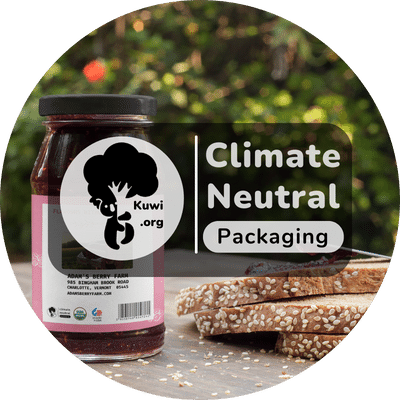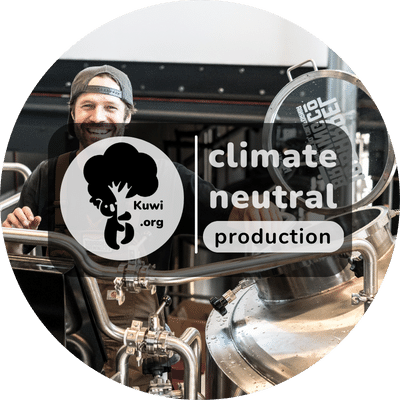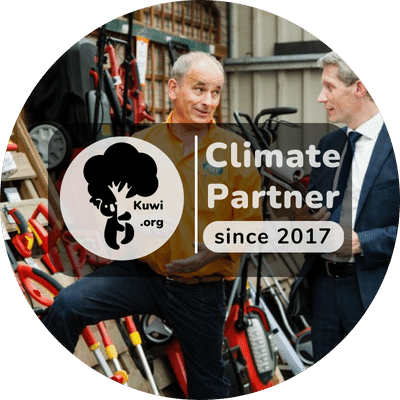Climate-Neutral Product Certificate
The effects of climate change are felt globally. Now, it’s becoming increasingly important for businesses to take action and reduce their ecological footprint. In addition to reducing their own emissions, offsetting unavoidable emissions is a good way to shrink the footprint.
To assist businesses in this process, there is the “climate-neutral end product” certification. This certification is awarded to companies that meet specific criteria related to their emissions, energy consumption, and sustainability practices. Here are some of the key requirements a company must meet to qualify for this certification.
Certificate Limitations
At Kuwi.org, we offer businesses the opportunity to become climate-neutral step by step. For this reason, we use partial certificates to help companies gradually achieve net-zero.
This article is about the “climate-neutral product” certificate, which means it only concerns the emissions related to a specific product. A company, for example, may have the “climate-neutral product” certificate but not the “climate-neutral office” certificate.
It’s also important to note that this certificate applies specifically to the product for which it is issued. It is common for companies to choose this certificate for a selection of their product range (read this article for common reasons for this choice).
To attain this certificate, a company must account for scope 1, 2, and 3 emissions attributable to the specific product. This includes emissions from sources not owned or managed by the company. The extraction and manufacturing of purchased materials, the transportation of purchased fuels, and the utilization of purchased goods and services are some examples of this.

- Direct greenhouse gas emissions from sources owned or controlled by the company, such as combustion emissions from boilers, furnaces, vehicles, etc., or chemical production emissions from process equipment owned or controlled.
- GHG emissions from the generation of electricity and heat purchased by the company are included in the category of indirect GHG emissions from purchased electricity and heat. The electricity that is purchased or brought within the organizational boundaries of the company is referred to as purchased electricity.
- Direct emissions from the production process, such as emissions from manufacturing, transportation, and packaging.
- Indirect emissions from the use of the product, such as emissions from the energy used to power the product during its lifetime.
- Indirect emissions from the supply chain, such as emissions from the production of raw materials and components.
- Emissions from the use of the product that are not related to energy consumption, such as emissions from the use of a chemical product released into the atmosphere.
- Emissions from the disposal of the product, such as emissions from the incineration or landfilling of the product.
- Other environmental impacts unrelated to carbon emissions, such as water pollution or loss of biodiversity.
- Emissions related to the use of the end product.
Data Collection Disclaimer
To date, there exists a significant imbalance between market average data and company-specific data, primarily due to two reasons. Firstly, obtaining primary data for individual companies is a costly and labor-intensive process. Achieving the utmost accuracy requires on-site verification and strict policy enforcement. However, the associated costs of such operations make climate action financially infeasible for most companies.
The second reason is that companies working with Kuwi.org are not legally obligated to offset their unavoidable emissions. Mandatory CO2 offsetting is only imposed on a handful of large enterprises in the EU (read more here). As a result, all other companies engage in offsetting their emissions through the voluntary CO2 offset market (learn more here).
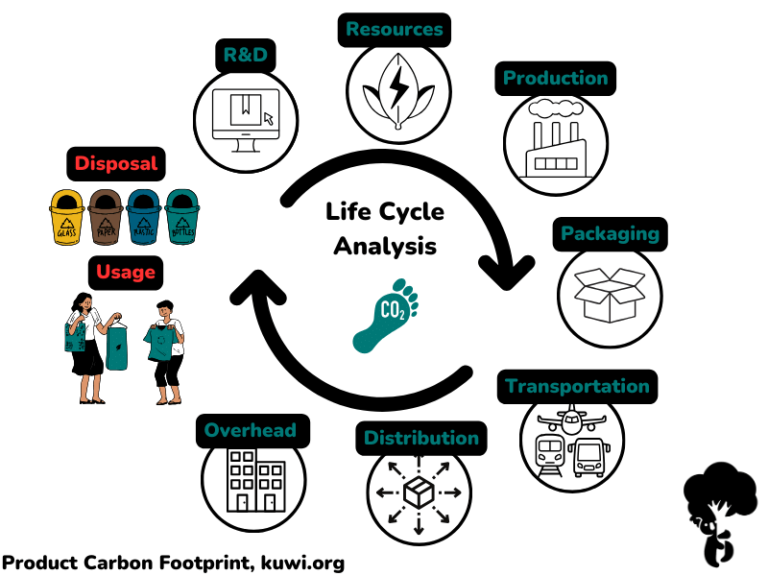
Reducing Emissions
Kuwi.org believes that CO₂ compensation is best used for emissions that cannot be avoided. Therefore, the company must have taken steps to reduce emissions for the product at all stages of the product’s life cycle analysis.
Additionally, the company should have plans to further reduce emissions in the future. This can include improving energy efficiency, transitioning to renewable energy sources, and reducing waste. The company should set specific goals for emission reductions and report and track progress toward these goals.

Offsetting Remaining Emissions
Even after taking measures to reduce emissions, there will still be a portion of carbon emissions that cannot be eliminated.
To qualify for a climate-neutral end product certificate, the company must offset these remaining emissions by purchasing CO₂ credits. These credits fund projects that reduce carbon emissions elsewhere, such as renewable energy projects or reforestation.
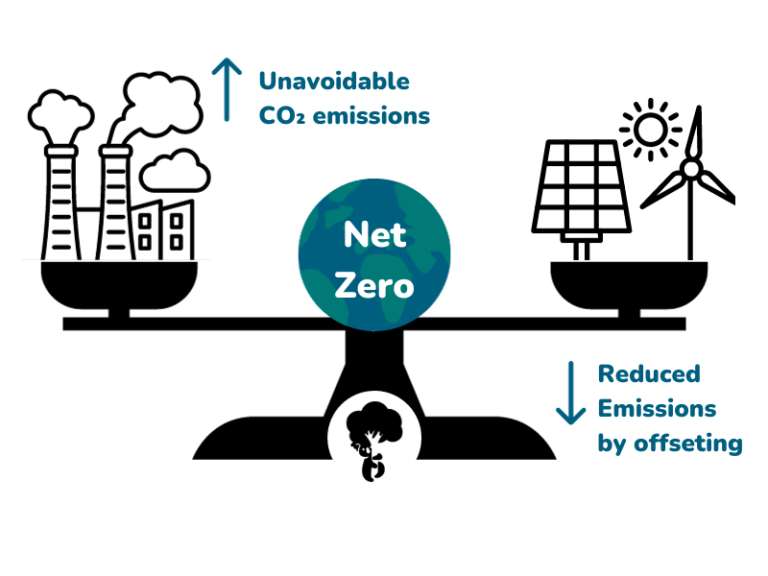
Sustainable Practices
In addition to emissions reductions and offsets, the company must also demonstrate that it applies sustainable practices in all of its operations. This includes the use of environmentally friendly materials, reducing waste and water consumption, and promoting sustainability throughout the supply chain.
Transparent Reporting
Finally, the company must commit to transparent reporting of its sustainability practices. This includes reporting on emissions reductions, carbon offsets, and sustainable practices.
The company should also enable independent verification of its sustainability practices to ensure it meets the requirements of the climate-neutral product certification.
CO₂ Offset
Despite significant efforts to reduce emissions, achieving absolute carbon neutrality in production is often impossible for most industries.
In such cases, Kuwi.org offers companies the opportunity to offset their remaining emissions by supporting verified CO₂ offset projects. These projects must adhere to strict standards, ensuring real and additional emission reductions in other sectors.
Examples of eligible offset projects include reforestation initiatives, renewable energy installations in underserved communities, or methane emissions capture and storage from landfills.
In Conclusion
Obtaining a climate-neutral product certificate is a rigorous process that requires companies to take significant steps to reduce their ecological footprint and implement sustainable practices.
By meeting these requirements, companies can demonstrate their commitment to sustainability and provide consumers with an easy way to identify environmentally friendly products. As the effects of climate change continue to be felt, it becomes increasingly important for companies to take action to address their environmental impact, and the climate-neutral product certification provides a clear path to this goal.



